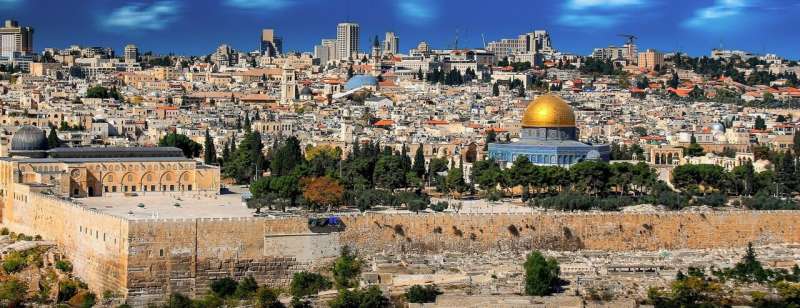Examination of ancient pottery shards reveals how a building burned during siege of Jerusalem in 586 BCE

A team of archaeologists from Tel Aviv University, the Hebrew University of Jerusalem and the Israel Antiquities Authority has found a way to reconstruct a fire in a single building in Jerusalem burned by the Babylonians in 586 BCE. In their study, reported in Journal of Archaeological Science, the group analyzed magnetic signals in shards of pottery recovered from the site to learn more about a fire in a single building.
Prior research has shown that from 586 to 587 BCE, the army of the Neo-Babylonian Empire conducted a siege against the city of Jerusalem. The city fell, and afterward, the Babylonians destroyed it, including the First Temple. Most buildings were destroyed by setting them on fire.
In modern times, archaeologists and scholars have studied some of the writings from the time that described the siege and artifacts collected from the site. But because the events occurred so long ago, it has been difficult for modern scientists to gain a clear perspective on the way the city was destroyed. In this new effort, the research team found that pottery shards recovered from the site could offer clues about what happened—at least for one building.
The work involved analyzing shards of pottery collected from a dig site identified as the base of an ancient two-story building. Prior researchers had named it Building 100. The team followed procedures of modern fire marshals—they wanted to know where the fire started in the building and how it progressed. To find out, they studied magnetic signals hidden in the pottery shards.
The researchers observed that some shards had magnetic signals pointing south—a finding suggesting that they had been demagnetized in the kiln before the fire. Other fragments were pointing north, which meant that they had been demagnetized after the fire. Noting that high temperatures are needed to change magnetic polarity, the team assumed that they had been altered during the fire.
Then, by comparing the magnetic direction of the shards with their location in the building, the team was able to trace the path of the fire and its strength. They found, for example, that it had burned hottest on the upper floor. It also never made it to some parts of the bottom floor, likely because the floor collapsed. Also, it was clear that the fire had been started in several locations, a sign that the arsonists were looking for complete destruction.
More information:
N. Shalom et al, Destruction by fire: Reconstructing the evidence of the 586 BCE Babylonian destruction in a monumental building in Jerusalem, Journal of Archaeological Science (2023). DOI: 10.1016/j.jas.2023.105823
© 2023 Science X Network
Citation:
Examination of ancient pottery shards reveals how a building burned during siege of Jerusalem in 586 BCE (2023, July 26)
retrieved 26 July 2023
from https://phys.org/news/2023-07-ancient-pottery-shards-reveals-siege.html
This document is subject to copyright. Apart from any fair dealing for the purpose of private study or research, no
part may be reproduced without the written permission. The content is provided for information purposes only.
For all the latest Science News Click Here
For the latest news and updates, follow us on Google News.

